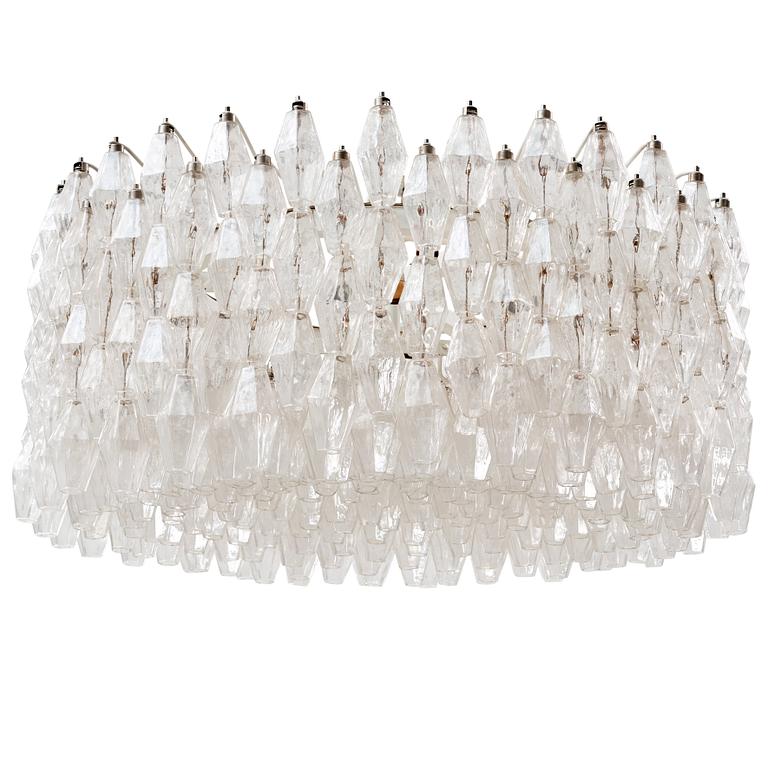Carlo Scarpa
A Carlo Scarpa 'Polyhedron' chandelier, Venini Italy 1960's.
White lacquered metal base with glass shades, for 29 lights, diameter 100 cm, height ca 45 cm.
Some shades with damages.
More information
Reportedly this is one of only two chandeliers executed in this size.
Designer
Carlo Scarpa was an Italian architect and designer. He was born and educated in Venice and primarily worked in the Veneto region. His modernist architecture exhibits almost poetic qualities, a sensitivity to detail, and shows great appreciation for craftsmanship. This is something he carried with him from working at the Venini glassworks between the 1933-1947. He worked first as a designer and later on as the artistic director. At Venini, Scarpa explored together with the glassblowers how they could push the boundaries of what had previously been done and further developing the various techniques.
Read more














































